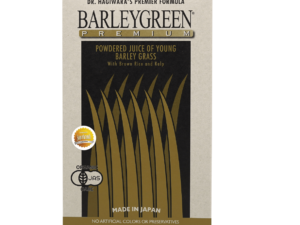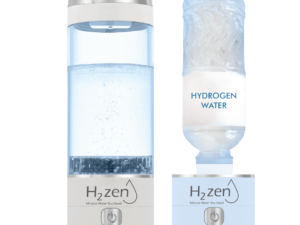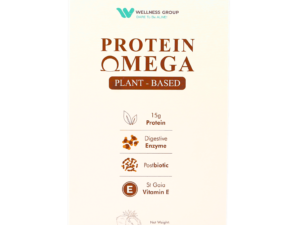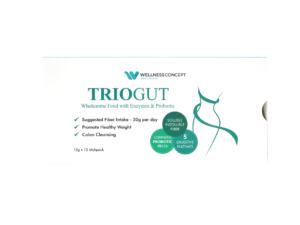Ever wondered why your stomach feels off after finishing a round of antibiotics? These powerful medications wipe out harmful bacteria—but they also eliminate 90% of beneficial gut flora, according to an NCBI study. This disruption leaves many struggling with digestive discomfort, weakened immunity, and fatigue.
Restoring balance requires strategic probiotic use, yet confusion persists about the ideal duration. Some research suggests Saccharomyces Boulardii strengthens the intestinal barrier, while others debate whether recovery takes weeks or months. The answer depends on strain selection, diet, and individual health factors.
For Malaysian readers, local dietary habits like fermented foods can complement probiotic regimens. Wellness Concept specializes in personalized gut health plans, blending science with practical lifestyle adjustments. Their team is available at +60123822655 during business hours for tailored advice.
Key Takeaways
- Antibiotics drastically reduce gut bacteria diversity, requiring careful restoration.
- Probiotic duration varies—some recover in weeks, others need months.
- Strains like Saccharomyces Boulardii protect intestinal lining.
- Local diets influence recovery speed and probiotic effectiveness.
- Professional guidance ensures optimal gut health post-antibiotics.
How Antibiotics Affect Your Gut Microbiome
Antibiotics act like a reset button for your gut—but not always in a good way. These medications target harmful bacteria causing infections, yet they indiscriminately eliminate beneficial microbes too. The result? A gut ecosystem thrown off balance.
The Good, the Bad, and the Collateral Damage

Click to LEARN MORE
Broad-spectrum antibiotics are the most disruptive. They attack a wide range of bacteria, unlike narrow-spectrum versions that target specific pathogens. A study in Infection and Immunity found broad-spectrum drugs reduce microbial diversity by up to 90% in mice.
Children face unique risks. Early antibiotic use links to higher rates of ADHD and obesity, per Wiley research. Even teenage acne treatments can alter gut bacteria for years.
Research on Microbial Population Drops
NCBI studies confirm antibiotics wipe out 90% of gut flora in humans. Recovery isn’t guaranteed—some strains never return. Harmful bacteria often “bloom” post-treatment, exploiting the empty space.
Repeated antibiotic courses compound the damage. Each use strains the gut microbiome further, making recovery slower. Bacteria also develop a “resistome,” adapting to survive future treatments.
“Antibiotics are a double-edged sword—lifesaving yet ecosystem-altering.”
Timing matters. The gut is most vulnerable during and immediately after a course antibiotics. Strategic probiotic use can help rebuild what’s lost.
Why Gut Bacteria Diversity Matters After Antibiotics
A healthy gut is like a thriving city—its strength lies in diversity. When antibiotics reduce microbial populations, the gut bacteria ecosystem loses its natural defenses. This imbalance can trigger infections, inflammation, and slow recovery.
Protective Functions of a Balanced Microbiome
Beneficial microbes act as bodyguards. They maintain the mucus layer, a barrier against harmful pathogens. Some strains produce antimicrobial compounds, crowding out invaders like Candida.
Gut bacteria also train the immune system. A diverse microbiome helps immune cells distinguish friend from foe. Low Bifidobacterium levels, common post-antibiotics, weaken this response.
Risks of Opportunistic Pathogens
Antibiotics create vacancies in the gut. Harmful bacteria like Clostridium difficile seize this chance. CDC data shows C. diff infections cause severe diarrhea in 5-35% of cases.
| Healthy Microbiome | Post-Antibiotic Microbiome |
|---|---|
| Diverse bacterial strains | Limited diversity |
| Strong mucus barrier | Thin, compromised lining |
| Balanced immune response | Higher inflammation risks |
Chronic diversity loss links to long-term issues like IBS and allergies. Restoring balance requires targeted probiotics and prebiotic foods.
How Long to Take Probiotics After Antibiotics for Best Results
Rebuilding gut health isn’t a one-size-fits-all process—research reveals starkly different recovery timelines. Some studies suggest 1.5 months suffices, while others argue for 6 months of probiotic use. The discrepancy stems from individual factors like strain selection and prior antibiotic exposure.
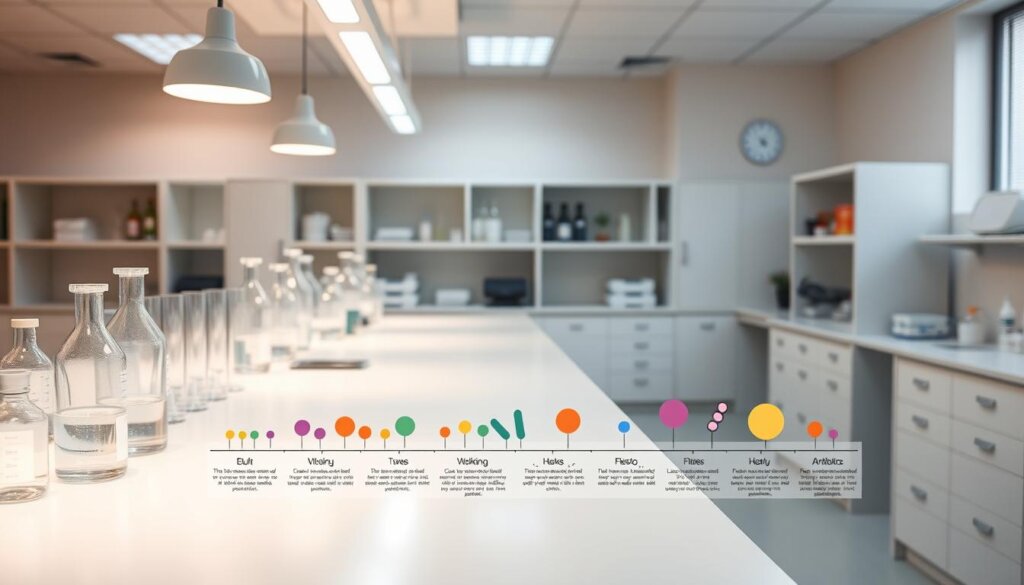
Clinical Recovery Timelines
A Cell study found gut diversity rebounds in 1.5 months with targeted strains. Conversely, DX DOI tracked participants for 6 months, noting lingering gaps in certain bacteria species. Permanent losses occur when antibiotics eradicate sensitive strains entirely.
Repeated antibiotic courses worsen the damage. Single treatments may allow faster recovery, but multiple rounds often demand extended probiotic support. Autologous FMT (stool freezing) emerges as a cutting-edge solution for severe cases.
Strain-Specific Considerations
Lactobacillus acidophilus (e.g., Culturelle’s Rosell-52) excels at reinforcing intestinal barriers during antibiotic use. In contrast, Bifidobacterium strains modulate immunity post-treatment. Pairing both types addresses different phases of recovery.
- Timing matters: Take probiotics 3 hours after antibiotics to avoid neutralization.
- Postbiotics help: Butyrate supplements aid gut lining repair when live strains aren’t enough.
- Local diets boost results: Malaysian fermented foods like tempeh complement probiotic regimens.
“Probiotic timing and strain selection are as critical as duration—missing either risks delayed recovery.”
Top Probiotic Strains With Scientific Backing

Click to LEARN MORE
Not all probiotics are created equal—some strains have strong clinical backing for gut recovery. Research highlights specific options that survive antibiotics, combat pathogens, and repair damage. Here’s what science says about the most effective choices.
Lactobacillus Acidophilus Rosell-52: The Antibiotic Survivor
Lactobacillus acidophilus Rosell-52 thrives alongside antibiotics—a rare trait. Clinical trials show it resists common drugs like amoxicillin, making it ideal for co-administration. Dosing: 5–10 billion CFU daily during treatment.
Unlike most strains, Rosell-52 adheres to intestinal walls, shielding them from inflammation. It’s widely available in Malaysia under brands like Culturelle.
Saccharomyces Boulardii: The Yeast Warrior
This probiotic yeast (S. Boulardii) fights Candida and diarrhea-causing bacteria. NCBI studies confirm it survives stomach acid, reaching the gut intact. Benefits include:
- Antimicrobial compound production
- Enhanced mucus barrier protection
- No risk of antibiotic resistance (as a yeast)
Butyrate-Producing Strains: Gut Lining Repair Crew
Bifidobacterium and certain Clostridium strains produce butyrate, a short-chain fatty acid. Kelly et al. (2015) found butyrate:
- Fuels colon cell regeneration
- Reduces inflammation by 40% in trials
- Enhances mineral absorption
“Butyrate is the gut’s healing currency—without it, repair stalls.”
Warning: Avoid unverified supplements. Look for FDA-approved strains like L. rhamnosus GG or B. lactis HN019. Pair with Malaysian tempeh or kimchi for synergy.
Optimal Timing for Probiotic Intake
Strategic scheduling enhances probiotic effectiveness when rebuilding gut health. Research shows proper timing can double microbial survival rates compared to random dosing. This becomes critical during antibiotic use, where misalignment neutralizes benefits.
During Antibiotics: The 3-Hour Window Strategy
Stomach pH levels fluctuate throughout the day, affecting probiotic viability. Morning doses work best when stomach acid is lower—ideal for Lactobacillus strains. Evening intake suits Bifidobacterium varieties that prefer alkaline conditions.
The NCBI’s separation protocol recommends:
- Waiting 3 hours after antibiotic use before taking probiotics
- Choosing extended-release formulations for IV antibiotic patients
- Pairing capsules with banana or oatmeal to buffer acidity
“The 180-minute window allows antibiotics to clear while preserving probiotic viability.”
Post-Antibiotic Maintenance Protocols
Recovery extends beyond the medication course. Most adults need 1-3 months of continued probiotic support. Children often require shorter durations due to faster microbial turnover.
Effective maintenance includes:
- Gradual reseeding with multi-strain formulas
- Combining morning doses (10am) with fermented lunches
- Using powder forms for faster absorption when doses are missed
Malaysians can enhance effects by aligning probiotic meals with traditional tempeh or kimchi consumption times. This creates synergistic gut support throughout the day.
Dietary Strategies to Support Recovery
Malaysia’s vibrant food culture offers unique advantages for rebuilding gut health naturally. Local ingredients packed with prebiotic fibers and traditional fermentation methods create an ideal environment for microbial recovery. This dietary approach complements probiotic supplements for faster results.

Malaysia's Prebiotic Powerhouses
Pisang Raja bananas lead the local superfood list, containing inulin that feeds beneficial bacteria. Other standout options include:
- Dragon fruit seeds (rich in oligosaccharides)
- Young coconut flesh (high in lauric acid)
- Petai beans (natural resistant starch)
A Burkina Faso microbiome study found traditional diets with similar foods increased microbial diversity by 40% compared to Western diets.
Fermented Traditions vs Modern Supplements
Homemade tempeh outperforms many commercial probiotics with its live Rhizopus cultures. Traditional preparation involves:
- 36-hour fermentation at controlled temperatures
- No pasteurization (retains active microbes)
- Natural soy isoflavones enhancing absorption
Store-bought versions often lose these benefits through processing. For urgent cases, high-CFU supplements work faster, but long-term recovery favors fermented foods.
Fiber: The Microbial Fuel
Soluble fiber (found in cempedak) forms gels that slow digestion, while insoluble fiber (like in brown rice) adds bulk. Both types:
- Feed different bacterial strains
- Produce short-chain fatty acids
- Strengthen the gut lining
Cooled rice offers resistant starch—a special fiber that survives digestion to nourish microbes directly. Aim for 25-30g daily fiber during recovery.
“Traditional Asian diets naturally provide the fiber diversity modern gut science recommends.”
Avoid high-sugar fruits like langsat during early recovery. Instead, try this daily plan:
- Breakfast: Oats with Pisang Raja
- Lunch: Tempeh with cooled rice
- Snack: Young coconut water
This approach gives the body the tools to rebuild a resilient microbiome naturally.
Lifestyle Factors That Accelerate Healing
Your daily habits play a surprising role in gut recovery after medication. Research shows lifestyle adjustments can enhance probiotic effects by 40%. The gut responds to sleep patterns, movement, and emotional states through the microbiome-brain axis.
Mastering Stress for Microbial Balance
Chronic stress shrinks beneficial bacteria populations within days. NCBI studies reveal cortisol reduces Lactobacillus levels while promoting harmful microbes. Malaysians can counter this with:
- Progressive muscle relaxation: 10-minute sessions lower inflammation markers
- Forest bathing: Bukit Nanas’ phytoncides boost microbial diversity
- Melatonin synergy: 3mg nightly enhances gut barrier repair
Smoking cessation is urgent—nicotine alters gut motility within hours. Even light alcohol disrupts microbial transport; limit to 3 weekly servings max.
Movement as Medicine
Exercise remodels the gut ecosystem differently than diet alone. A Hindawi trial found:
| Activity | Microbiome Impact | Malaysian Adaptation |
|---|---|---|
| Yoga | +27% Bifidobacterium | Morning sessions with cooling peppermint tea |
| HIIT | Faster butyrate production | Shorter 15-min routines for humidity tolerance |
| Walking | Balances urban/rural microbial gaps | KLCC Park loops for vitamin D synthesis |
Post-antibiotic fitness should start gentle—overexertion strains the body during recovery.
The Sleep-Gut Repair Connection
REM sleep phases trigger mucosal lining regeneration. Just one night under 6 hours reduces microbial health markers by 18%. Optimize sleep with:
- Cool bedroom temps (24°C ideal for tropical climates)
- Hydration strategy: 500ml water 2h before bed supports microbial transport
- Banana-leaf wrapped pillows (traditional Malay method reduces cortisol)
“Deep sleep stages act as a reset button for gut barrier function—neglect them and recovery stalls.”
For personalized plans, explore gut-friendly exercise routines tailored to Malaysian lifestyles.
Getting Professional Gut Health Support in Malaysia
Navigating gut recovery requires expert guidance tailored to individual needs. Wellness Group offers science-backed solutions, combining advanced testing with personalized care to restore microbiome balance after medication.
Comprehensive Gut Microbiome Testing
Their health assessments go beyond standard stool tests. Advanced sequencing identifies specific bacterial deficits post-antibiotics, including:
- Quantification of Bifidobacterium and Lactobacillus levels
- Pathogen screening (e.g., C. difficile)
- Butyrate production capacity analysis
Tailored Probiotic Formulations
Results inform custom probiotics blends. Clinicians adjust strains like Saccharomyces Boulardii based on:
| Factor | Adjustment |
|---|---|
| Antibiotic course duration | Higher CFUs for extended use |
| Existing conditions (IBS, allergies) | Strain-specific selections |
| Local diet habits | Prebiotic pairings (tempeh, coconut) |
Ongoing Recovery Monitoring
Follow-ups track progress through:
- Bi-weekly symptom journals
- Repeat testing at 30/60/90 days
- Dietary tweaks based on microbial shifts
“Personalized protocols reduce recovery time by 50% compared to generic approaches.”
Accessible Expert Care
Their multidisciplinary team includes:
- Nutritionists certified in gut health
- GPs with microbiome specialization
- Weekend telehealth consultations
Contact: WhatsApp +60123822655. Business hours: Mon-Fri 9:30am-6:30pm, Sat-Sun 10am-5pm. Clinics in KL, Penang, and Johor Bahru.
Conclusion
Restoring gut health post-antibiotics demands patience and precision. Recovery spans 1.5–6 months, influenced by strain selection, diet, and lifestyle. The right probiotics antibiotics combo, timed correctly, rebuilds microbial diversity effectively.
Avoid unnecessary antibiotic use—each course risks permanent microbial loss. Pair supplements with Malaysian staples like tempeh for faster results. Gradual dietary shifts work better than abrupt changes.
For personalized plans, consult Wellness Group at +60123822655. Their testing pinpoints specific deficits, speeding recovery. Learn more about optimizing probiotic intake for your needs.
Consistency matters. Protect your microbiome with mindful habits, regular check-ins, and professional support. A resilient gut fuels overall vitality.
FAQ
Do antibiotics kill good gut bacteria?
Yes, antibiotics reduce both harmful and beneficial microbes. Studies show up to 90% of gut bacteria may be affected during treatment.
What happens when gut bacteria diversity decreases?
Lower diversity raises risks of digestive issues, weakened immunity, and opportunistic infections. A balanced microbiome helps protect against pathogens.
Which probiotic strains work best with antibiotics?
Lactobacillus acidophilus Rosell-52 and Saccharomyces boulardii have strong research backing for use during antibiotic therapy.
Should probiotics be taken at the same time as antibiotics?
No, spacing doses 3 hours apart prevents antibiotics from killing probiotic strains before they reach the gut.
How can diet help restore gut health post-antibiotics?
Prebiotic foods like bananas and garlic feed good bacteria, while fermented foods like tempeh add beneficial microbes.
Does exercise impact gut microbiome recovery?
Moderate physical activity increases microbial diversity and supports faster gut health restoration after medication.
Where can Malaysians get professional gut health advice?
Wellness Group offers consultations with microbiome specialists. Call +60123822655 during business hours for appointments.


